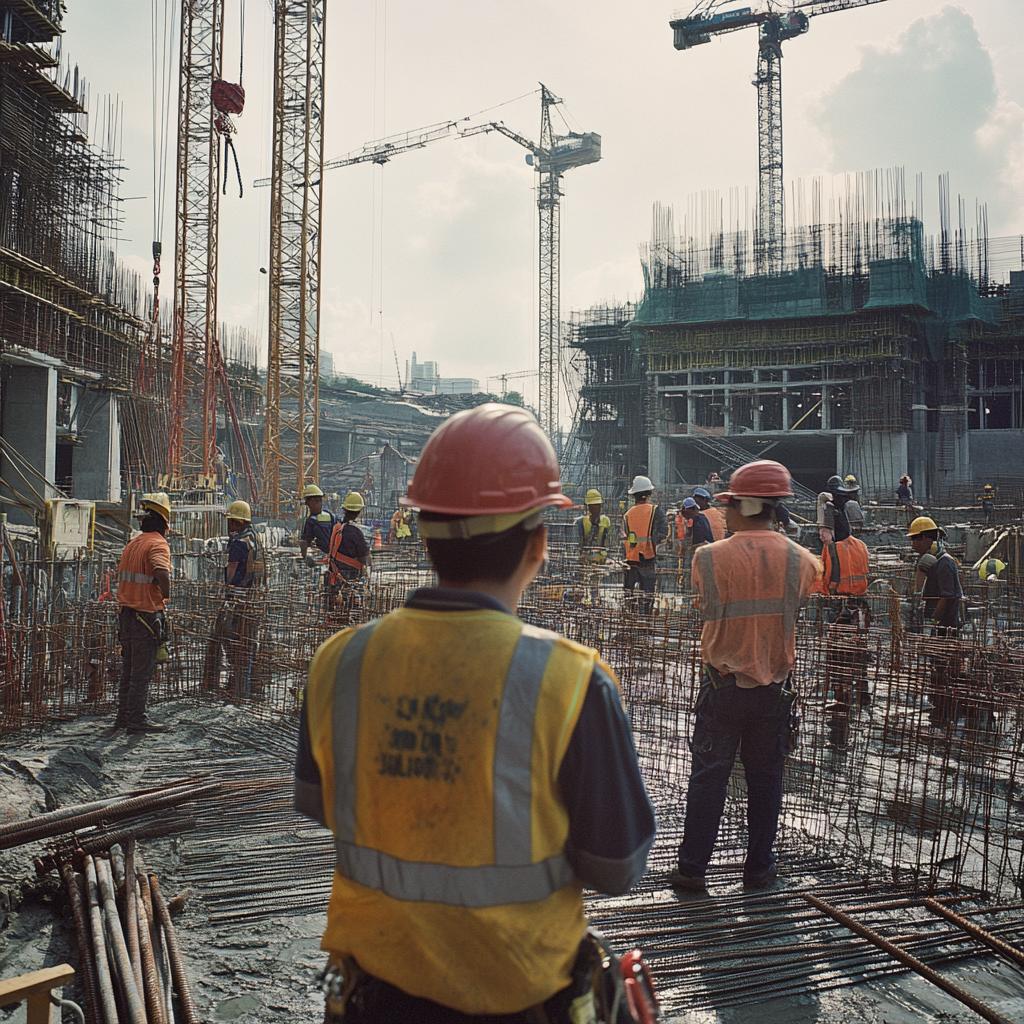Labour Minister Phiphat Ratchakitprakarn, like a commander rallying troops for a crucial mission, has declared a resolute call to arms for enhanced safety measures, targeting construction sites that have, unfortunately, become synonymous with tragic mishaps. The epicenter of this safety storm is the construction project along the bustling Rama II Road, notorious for its repeated tally of misfortune, leaving behind a heartrending wake of injuries and losses.
In an earnest quest to turn the tide, Phiphat has marked a red-letter day for March 28, where he plans an urgent parle with the Italian-Thai Development (ITD) – a rendezvous poised to lay the groundwork for a safer tomorrow. Rallying the expertise of the Department of Labour Protection and Welfare (DLPW) and the insightful minds at the Institute for the Promotion of Occupational Safety, Health and Environmental Working Conditions (POSHEC), the Labour Minister is scripting a saga of transformation, urging inspections across the sprawling construction landscape of Thailand, with Bangkok bearing the spotlight of scrutiny.
This narrative is not just a local tale but a call for an overarching safety epic; contractors from Bangkok and its surrounding environs are being summoned. The gathering promises not just talk but action, with a toolbox brimming with comprehensive safety measures and well-drafted preventive strategies. Picture scenario simulations likened to dramatic rehearsals, pinpointing the Achilles’ heel and crafting robust compasses of prevention—this is the vision Minister Phiphat intends to realize.
In the midst of these efforts lies a crucial component—ensuring that every worker, Thai or foreign, navigates their day with the protective shield of Section 33 of the Social Security Act. Employers are thus implored to shoulder the mantle of responsibility should accidents cast their shadows upon their workforce. Visuals of sprawling construction sites must now be painted with the strokes of accountability and safety nets stretched wide.
Meanwhile, Saroj Khumkhai, the dynamic captain steering the ship of DLPW, continues to delve into the mysterious substrata of the recent March 18 calamity on Rama 2 Road. Accompanied by the pillars of the Expressway Authority of Thailand (EXAT) and other noteworthy entities, Saroj is unraveling a multi-layered investigation, ensuring it maps the correct course upon treacherous waters.
The Italian-Thai Development, labeled as a pivotal player, stands at the crossroads, facing a crucial fact-finding session. The gaze of the Safety Act 2011, with its keen focus on Section 8, hovers over them, ensuring adherence to the doctrines governing construction, dizzying altitudes, scaffolding antics, and the grand orchestration of cranes.
For any discord in this regulatory symphony—fines humming up to 400,000 baht, or echoes of up to a year’s solitude in imprisonment, or perhaps both—await those who march out of step. Saroj’s voice resonates with a legal crescendo, underscoring the tenacity with which laws are enforced, promising an unwavering vigilance as reinforcements like the Engineering Institute of Thailand (EIT) join this formidable alliance. A clarion call resounds for all state agencies to marshal subcontractors into line, ensuring a harmonious adherence to the safety score.
As we turn to the bustling tapestry of news around, tales weave from the surreal to the somber—a son believed lost, astonishingly found, a revered monk succumbing to heat in the soaring blaze triumph of nature, and the Prime Minister journeying to bathe Phuket’s tourism dreams in the glow of sustainability. Each story a thread, painting the vibrant spectacle of Thailand in all its multifaceted splendor.
In the end, this push for safety is more than a decree; it’s a pledge, a vow to shield those who build our world from the shadows that loom too close. As the curtains rise on this new chapter of vigilance, one can only hope it lights a beacon that guides every construction zone into the realm of the truly safe and sound.


















Finally, someone is taking construction safety seriously! Rama II has been a deathtrap for too long.
I agree, but do you think rhetoric will translate into real action? We’ve heard promises before.
It’s all about implementation. Without proper inspections and penalties, it remains just rhetoric.
True, but with multiple agencies involved this time, it looks more promising.
Does anyone really think Phiphat can pull this off? It’s just a PR stunt to me.
People have said the same about other initiatives but change happens when pressure is consistent.
It’s a bit naive to call it just PR. Safety laws need both awareness and enforcement.
Really interesting article, but what about the environmental aspect? Isn’t construction inherently harmful to our ecosystem?
Yes, that’s a valid concern. Safety and environmental impact should go hand in hand.
Absolutely. Sustainable practices should be part of the plan to minimize ecological damage.
It’s about time the Italian-Thai Development faced scrutiny. They’ve cut corners many times.
Sadly, cutting corners is too common. Let’s see what fines or actions come from this.
Increased accountability could really change the construction industry’s landscape.
The psychological aspect of worker safety is often overlooked. Morale and mental health play critical roles in overall safety.
Indeed, stressed workers are more prone to accidents. Safety training should include psychological wellness.
Completely agree. Mental health programs should be mandatory on such hazardous sites.
Don’t forget the poor work conditions suffered by foreign workers. They often get the brunt of unsafe sites.
This initiative is a great chance to integrate advanced tech for monitoring safety.
Let’s hope action follows quickly. Too many lives have been lost already.
Won’t changing site safety cost too much? Companies might not be on board.
It’s an investment worth making. Lives are priceless, and profitability won’t matter if the construction firm is shut down due to liabilities.
If Phiphat wants sustained change, he needs more than just construction companies involved. All relevant sectors should collaborate.
As long as they’re moving in the right direction, that’s what counts. Getting results will take time.
More public awareness campaigns on construction safety would reflect positively on societal behavior and expectations.